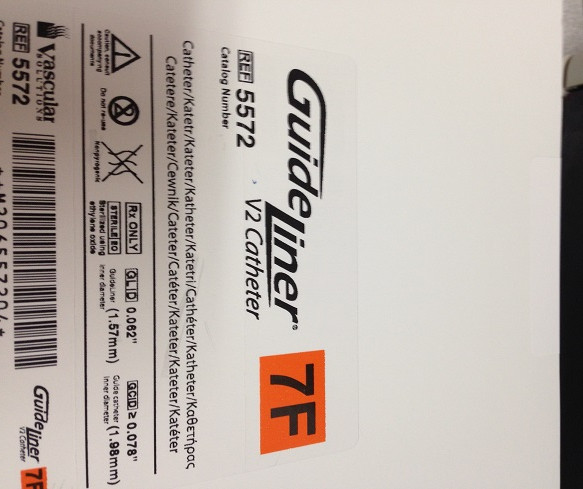
This device should be used only by physicians thoroughly trained in percutaneous, intravascular techniques and procedures. Do not inject contrast media solution at high pressure during the procedure. Instead, simultaneously pull both the guide extension catheter and undeployed stent back into the guide catheter and remove them together. Do not withdraw an undeployed stent back into the guide extension catheter when the catheter is in the body, because it can dislodge the stent. Do not advance the guide extension catheter more than 15 cm beyond the tip of the guide catheter because the guide extension catheter can become lodged in the guide catheter making it difficult to remove. Do not attempt to move the catheter without observing the resultant tip response, because catheter damage or vessel injury can occur. When the guide extension catheter is in the body, manipulate the catheter only under fluoroscopy. Use caution when handling the guide extension catheter during a procedure to reduce the possibility of accidental breakage, bending, or kinking. Flush the guide extension catheter lumen with sterile, heparinized saline before use. Vessel damage and inability to advance or withdraw the catheter can occur. Inspect the guide extension catheter before use for any bends or kinks. A damaged package could result in a breach of sterility or device damage. Do not use the guide extension catheter if the packaging has been damaged. If the cause cannot be removed, withdraw all the devices simultaneously. Determine the cause of the resistance before proceeding. If strong resistance is encountered during manipulation of the devices, do not force passage. Due to the size and the non-tapered tip of the guide extension catheter, use extreme care to avoid vessel occlusion and damage to the wall of the vessels. Torquing the device can result in wire wrap or damage to the device or vessel. Do not apply torque to the guide extension catheter during delivery because catheter damage can occur. Perform PTCA only at hospitals where emergency coronary artery bypass graft surgery can be performed in the event of a potentially injurious or life-threatening complication. Use the guide extension catheter before the Use-by date specified on the package. If pressure in a vessel dampens after inserting the guide extension catheter, withdraw the guide extension catheter until the pressure returns to normal. 
Vessel injury, ischemia, and occlusion can occur. Do not advance the guide extension catheter into a vessel with an effective diameter less than 2.5 mm.

Do not advance the guide extension catheter into a vessel without a leading guidewire because vessel damage can occur.Resterilization or reuse can compromise device performance and increase the risk of inadequate resterilization and cross-contamination. For single-patient and single-procedure use only.In vessels in the neurovasculature or the venous system.In vessels less than 2.5 mm in diameter.The guide extension catheter is contraindicated in the following situations: Telescope™ guide extension catheter is intended to be used in conjunction with guide catheters to access discrete regions of the coronary and/or peripheral vasculature, and to facilitate placement of interventional devices.

Prior to use, refer to the Instructions for Use supplied with these devices for indications, contraindications, side effects, suggested procedure, warning and precautions.







 0 kommentar(er)
0 kommentar(er)
